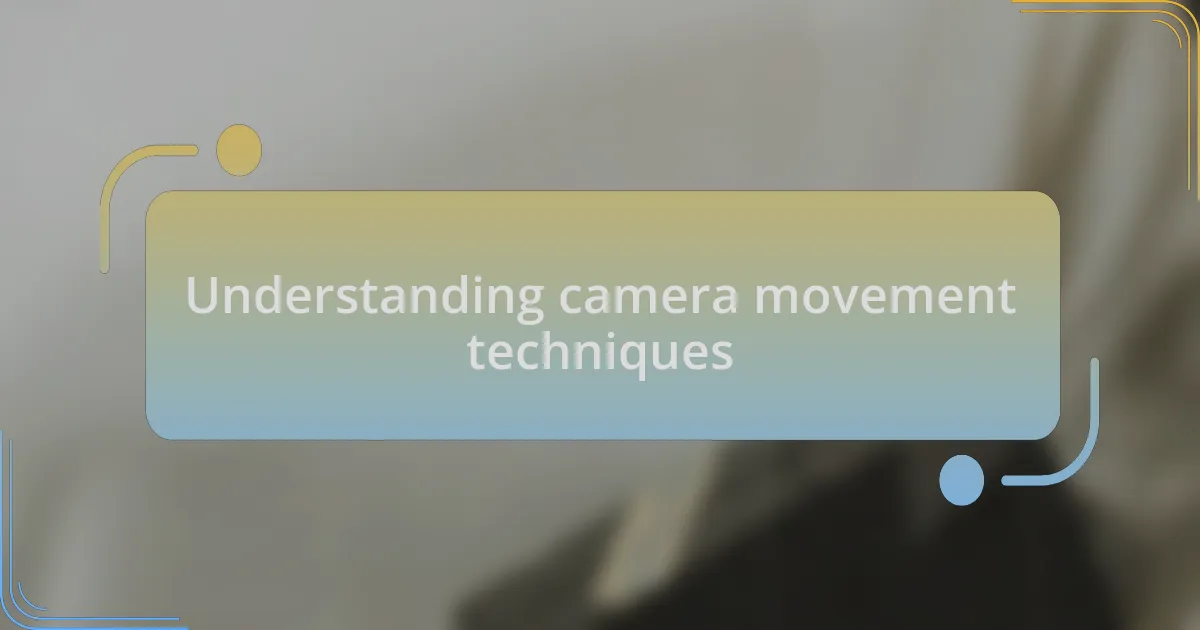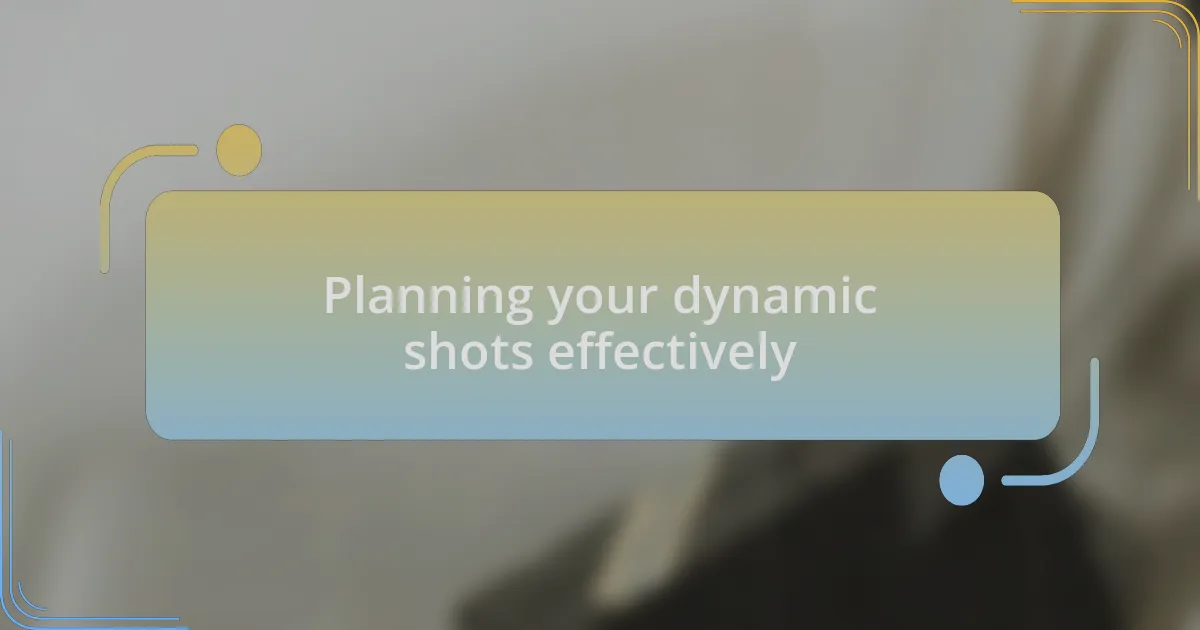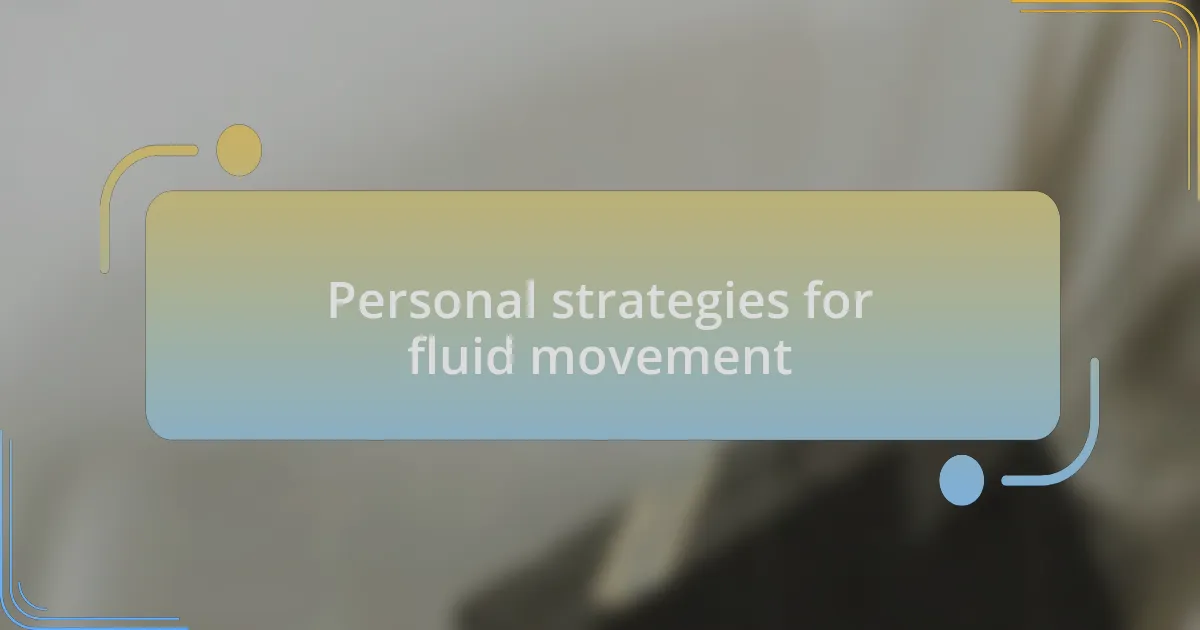Key takeaways:
- Camera movement techniques greatly influence viewer emotions and storytelling depth.
- Effective planning and rehearsing with the team enhance the quality and fluidity of dynamic shots.
- Flexibility and spontaneity during shoots can lead to capturing genuine moments and unique visuals.
- Breaking down complex movements into smaller sections aids mastery and precision in camera work.

Understanding camera movement techniques
Camera movement techniques are essential in shaping the viewer’s emotional experience. When I first began exploring these techniques, I was captivated by how a simple pan could transform a scene. Imagine a character slowly walking down a deserted street while the camera glides alongside them—suddenly, you feel connected to their journey, as if you’re walking right beside them.
It’s fascinating how different techniques can evoke various moods. For instance, a tilt can create a sense of unease or wonder, depending on the context. I remember experimenting with a low-angle tilt during a tense moment in one of my projects, and it felt like the walls were closing in. Those small adjustments in camera movement can make a big impact on storytelling, don’t you think?
Moreover, incorporating movement—like tracking shots—adds a dynamic quality to your scenes. I often think about how much more captivating my shots became when I started using a steadicam for smooth motion. It brought a new energy that was palpable, making me realize that the right technique can elevate a story from good to unforgettable. What techniques resonate with you?

Planning your dynamic shots effectively
When I plan my dynamic shots, I prioritize the narrative context. I’ve learned to visualize each scene, considering how movement can amplify the story. For example, during a shoot for a chase sequence, I mapped out my shots in advance, ensuring that every camera angle would highlight the urgency and adrenaline. It’s incredible to see how effective planning can transform a chaotic concept into an exhilarating experience for the audience.
Another critical element is rehearsing with the actors and crew. I vividly recall a time when I spent extra hours refining a scene with fast-paced dolly moves. By practicing together, we adjusted timing and positions, allowing the camera movements to feel natural and fluid. How can you ensure your team is on the same page? I’ve found that open communication and a shared vision can lead to a smoother shooting process and stunning results.
Additionally, I’ve discovered the importance of flexibility in planning. Sometimes, the best shots are born out of spontaneity. While shooting a romantic scene, we unexpectedly switched angles based on the actors’ chemistry. It not only captured genuine emotions but also created a unique visual dynamic. Have you ever adapted your approach mid-shoot? This willingness to pivot can yield unexpected gems that elevate your project.

Personal strategies for fluid movement
When it comes to achieving fluid movement, I often focus on the connection between camera movement and actor performance. I remember a time on set when I coordinated a fluid handheld shot with a dancer, where every step they took influenced the camera’s flow. This synchronization not only enhanced the visual rhythm but also drew the audience deeper into the emotional landscape of the scene. Have you ever noticed how fluid movement can transform a moment into something transcendent?
To add depth to my camera work, I like to experiment with various tools and techniques. For instance, I once utilized a slider to create a smooth lateral move that mirrored the internal conflict of a character. The subtle tension in their expression was beautifully amplified by this technique, creating a more immersive experience. It made me realize that the right tool used creatively can elevate storytelling, making each frame resonate more profoundly with viewers.
Moreover, I find that breaking down complex movements into smaller, manageable sections is essential. On a past project, I practiced intricate crane movements by first mastering each segment separately. This step-by-step approach allowed me to focus on precision and fluidity, resulting in a seamless final shot. It’s a great way to build confidence and ensure that the overall movement feels cohesive. Have you tried dissecting your shots in this manner? It can be a game changer for mastering dynamic camera work.